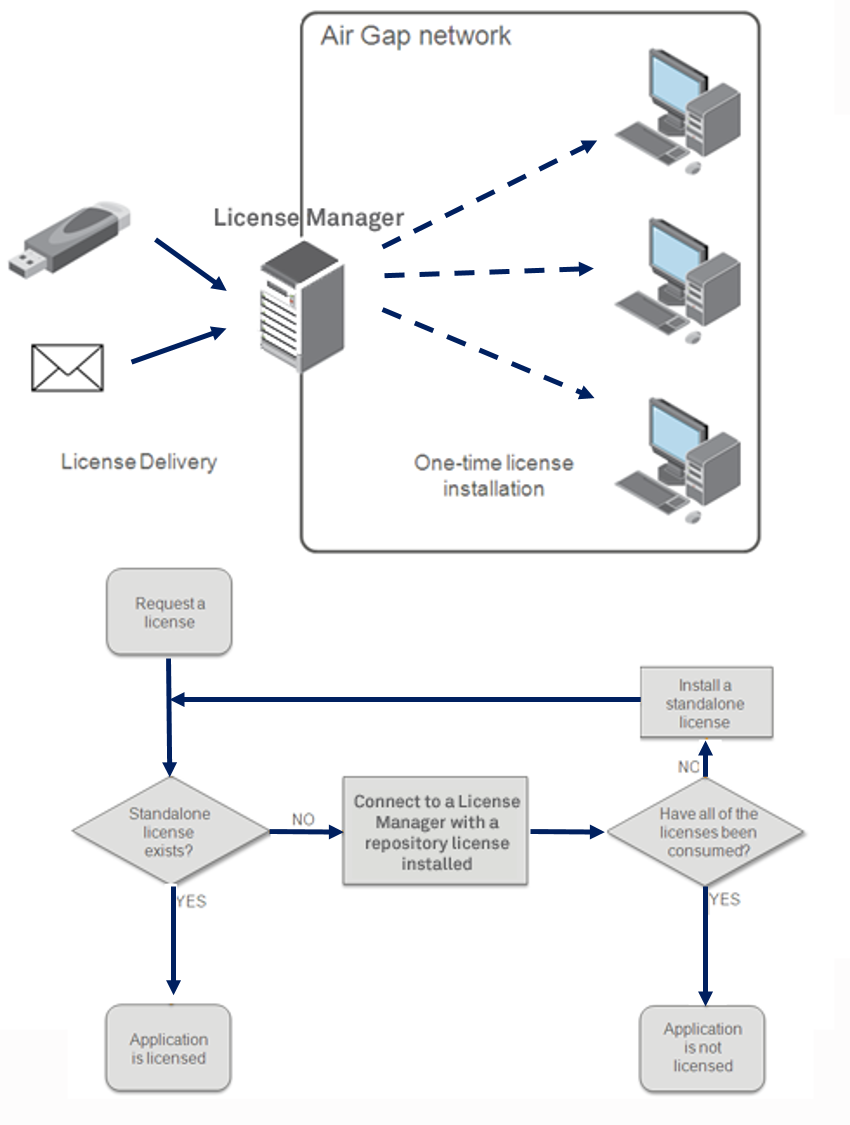Repository License Scenarios
The following section describes a few scenarios in which repository licenses make a better choice.
Scenario 1 - When Checking Out a License Becomes an Overhead
In any organization, sales representatives often need to travel for business purposes. They require a report creation software on a daily basis to compile their records. In the office premises, the license for the application—deployed on a License Manager—is easily available. However, beyond the office boundaries, access is restricted. Traditionally, they are used to obtaining commuter licenses; often with the help of the system administrator to access the application off the network. However, this approach suffers from the following drawbacks:
>Frequent check-ins and check-outs of commuter authorizations become a bottleneck.
>The employees need to plan in advance for obtaining a commuter license. This is often overlooked in urgent situations.
Therefore, we need a license that can reside on the workstation even beyond the network, functioning seamlessly without requiring any special procedure, and meet this requirement. To meet such specific user requirements, Sentinel RMS offers repository licenses.
Scenario 2 - Using Network Licenses in Air Gap Network
A customer operates in a closed network environment, often described as an Air Gap network. None of the workstations within this network have connectivity to the outside world, yet this customer still needs to be able to use the software vendor's software.
This is a classic use case for repository licenses. The software vendor can deploy the License Manager to their customer, but when a repository license is installed onto the License Manager, the License Manager operates in a manner which is more akin to a locally deployed activation server.
When the applications which are installed onto the workstations are first launched, they will download and install a local standalone license from the License Manager. Once this step has been performed, the applications will no longer be required to interact with the License Manager and will use the installed license in a traditional standalone way going forward.

Although this scenario can be addressed by using commuter licenses, the main benefit of using repository licenses is that the software vendor does not need to implement any additional logic around commuter licenses. The implem entation of the application can be consistent with a traditional standalone model. The applications are making the same conventional license requests as they would when accessing a license from a local standalone file or a floating License Manager.
Tip
In this scenario, it is also possible to use the license hard limit property to enforce the maximum limit on the number of standalone activations for the site.
